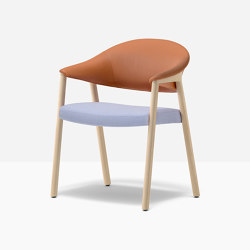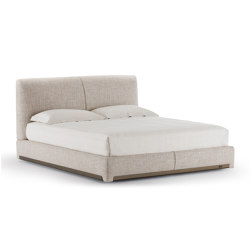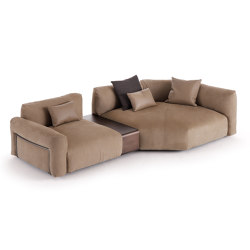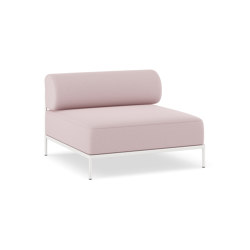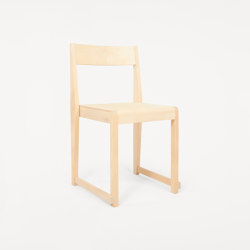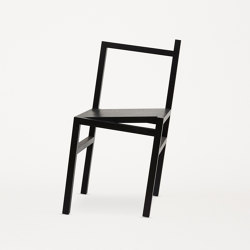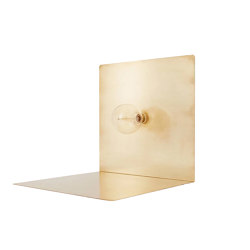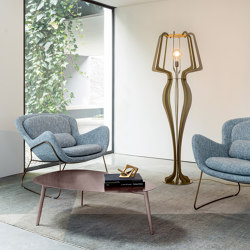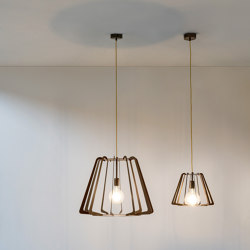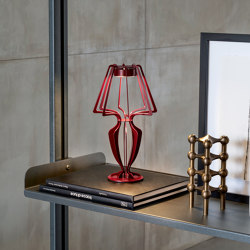À propos de Neue Wiener Werkstätte
EN SAVOIR PLUS SUR NEUE WIENER WERKSTäTTE
From an art style at the turn of the century to a brand in the 21st
The historical development of architecture, furniture and home accessories is also the story of the fusion of craftsmanship and art into the Arts and Crafts Movement. This relationship was first challenged towards the end of the 19th century by products manufactured on an industrial scale. Mass production eliminated the element of art from its products and forced a uniform taste on its customers. Industrial production first started in England, therefore it was there that this new development came under close scrutiny. Architects, painters, writers and artisans founded the Arts and Crafts Movement. Their aim was to revive craftsmanship in an age of mass-produced inferior consumer goods.
This philosophy was subsequently adopted by the Wiener Werkstätten GmbH., which was started by visual artists in 1903 as a producers’ co-operative. Based on solid craftsmanship, all living areas were drawn together in a single harmonious design and blended into a comprehensive work of art (Gesamtkunstwerk) with the particular style being influenced by the people involved and Vienna’s unique flair. The founders and art directors of Wiener Werkstätte were Josef Hoffmann a disciple of Otto Wagner, and Koloman Moser also a founding member of the Wiener Sezession, as well as Fritz Wärndorfer who provided the necessary funding. Next to Otto Wagner, Gustav Klimt and Egon Schiele, Koloman Moser in particular is seen today as one of the most important artists of the Art Nouveau (Jugendstil) movement.
The artistic direction of the company was strongly influenced by the Wiener Sezession and the Viennese School of Applied Arts (Wiener Kunstgewerbeschule), today known as the University of Applied Arts of Vienna. This Viennese variety of Art Nouveau closely follows the stringent style of Classicism and it adopted many ideas from Southern European architecture. The floral and figurative elements of Art Nouveau were used to embellish only facades. This artistic direction of the Wiener Werkstätte is the main reason why, still today, the design appears so timelessly modern.
The Wiener Werkstätte created artefacts for all areas of interior design and lifestyle, from architecture to the smallest article of daily use. Only a limited amount of furniture was manufactured in its own carpentry shop, the larger part being entrusted to several other cabinet-makers that were well-known for their particularly high quality. In the wake of worldwide economic depression and the bankruptcy of its financier, the Primavesi Bank, the Wiener Werkstätte had to close down in 1932. The idea of the Wiener Werkstätte was revived again in 1969. A manufacturer of upholstered furniture by the name of Harry Jodlbauer registered the brand ‘Wiener Werkstätte’ with the aim of once more uniting arts and crafts. Once the restrictions imposed on them by the war and the post-war era had eased, the ‘Golden Seventies’ seemed to be fertile ground for the re-emergence of high-quality craftsmanship. In 1986, KAPO Möbelwerkstätten GmbH, with its main offices in Pöllau/Styria, acquired Jodelbauer's company, and with it the brand 'Wiener Werkstätte'.
The product range of the Neue Wiener Werkstätte
Today, the ‘Neue Wiener Werkstätte’ brand comprises furniture, upholstered furniture and home accessories. The distinguishing characteristic of the business is its individual and tailor-made complete interiors. The full range of furniture is available both at the Vienna Customer Centre and at a number of exclusive interior design shops. The Customer Centre will gladly inform you of the shop located nearest to you or you can find all their addresses on the homepage of the Neue Wiener Werkstätte. The Neue Wiener Werkstätte Customer Centre, with a show-room of over 1,000 sqm, was opened in 2005 in Vienna’s 18th district at Theresiengasse 6. The location has its own tradition and history as it once served as a stable for the famous Viennese horse carriages (Fiaker), and between 1960 and 2000 as the upholstery manufacturing workshop of the Wiener Werkstätte. This location is now complemented by a second showroom only a few yards away at Jörgerstrasse 9.
Each piece of furniture is tailor-made, exactly to the customer’s desires and measurements. Despite the vast amount of handcrafting involved in the manufacturing process, the delivery period of six weeks compares easily with the usual six weeks offered by large furniture suppliers for mass-produced goods. The Neue Wiener Werkstätte offers two product lines of furniture: ‘Classic’ and ’Modern’. Both follow the clean, timeless lines of the historic Wiener Werkstätte. The design of the ‘Modern’ line is reduced to essential simplicity, whereas the ‘Classic’ line has added delicate ornamentation that is in full harmony with the brand’s tradition. Clean lines also dominate the design of upholstered furniture. Each piece is tailor-made ensuring that the customer obtains unrivalled individuality. A soon as you sit down, you can feel the quality of the craftsmanship and the high standards applied when the covering materials are chosen.
The ‘Neue Wiener Werkstätte’ and KAPO Möbelwerkstätten GmbH
KAPO Möbelwerkstätten GmbH has marketed the brand ‘Neue Wiener Werkstätte’ since 1986 and the name stands for quality of design and manufacturing untouched by time: The brand’s tradition is a hallmark for clean forms and elegant lines, which surpass the spirit of the age for an unparalleled feeling of living comfort.
KAPO was founded by Karl Polzhofer I. as a small carpentry shop. It took the work of four generations to transform this small business, founded in 1927 with two employees, into ‘Styria’s best privately owned enterprise 2005’, with a current workforce of over 200. In the early 70’s, Karl III. succeeded in developing the company into a midsized enterprise. The highlights on this path of expansion are: the formation of a Ltd. Company and the setting-up of a window production in 1971; the takeover in 1986 of the upholstery manufacturer Polstermöbelwerke Jodlbauer which owed the brand ‘Wiener Werkstätte’; and the setting up of its own furniture plant in 1989. These developments allow KAPO today to offer a wide range of high-quality products, including wooden and aluminium/wood windows, entrance doors, interior doors, conservatories, and hotel, hospital, and shop interiors, all manufactured under the KAPO brand. Furniture for the home interior, upholstered furniture and home accessories form part of the brand 'Neue Wiener Werkstätte'.
The employees of the two productions lines of furniture and upholstered furniture all are highly committed to maintaining quality standards set by the Polzhofer family. ‘We offer our employees individual training plans so that they have every possibility to continuously improve their performance. Our management also regularly participates in leadership training. However, only a solid basis can achieve the desired effect, i.e. when individuals are committed to working as a team to support our expectations of quality,’ says Karl Polzhofer with absolute conviction. As is usual in all high-tech enterprises, KAPO has also installed a quality management system to ensure that the company’s own high standards of production are actually fulfilled. Another important part of the company’s quality assurance is ecological criteria. These are even more crucial, as the company is located in the natural park Pöllautal.
The Royal House of Saudi Arabia, the Queen of England, Friedrich Karl Flick, or the Chelsea football team owner Abramovich all are enthusiastic customers of KAPO. KAPO products can also be found where prestige is the measure of all things, the Chamber of the German Parliament and the Austrian National Bank are only two examples of KAPO interior design projects. ‘Our customers appreciate us because we do not make compromises but rather find the best possible solutions with tailor-made craftsmanship,’ stresses Karl Polzhofer who now manages the company in the third generation.
Thanks to the Polzhofer family and its employees, the ideals of the founding fathers are still visible in the furniture, upholstered furniture and home accessories of the ‘Neue Wiener Werkstätte’. These ideals link art and craftsmanship and counterbalance standardized taste and industrial production.
From an art style at the turn of the century to a brand in the 21st
The historical development of architecture, furniture and home accessories is also the story of the fusion of craftsmanship and art into the Arts and Crafts Movement. This relationship was first challenged towards the end of the 19th century by products manufactured on an industrial scale. Mass production eliminated the element of art from its products and forced a uniform taste on its customers. Industrial production first started in England, therefore it was there that this new development came under close scrutiny. Architects, painters, writers and artisans founded the Arts and Crafts Movement. Their aim was to revive craftsmanship in an age of mass-produced inferior consumer goods.
This philosophy was subsequently adopted by the Wiener Werkstätten GmbH., which was started by visual artists in 1903 as a producers’ co-operative. Based on solid craftsmanship, all living areas were drawn together in a single harmonious design and blended into a comprehensive work of art (Gesamtkunstwerk) with the particular style being influenced by the people involved and Vienna’s unique flair. The founders and art directors of Wiener Werkstätte were Josef Hoffmann a disciple of Otto Wagner, and Koloman Moser also a founding member of the Wiener Sezession, as well as Fritz Wärndorfer who provided the necessary funding. Next to Otto Wagner, Gustav Klimt and Egon Schiele, Koloman Moser in particular is seen today as one of the most important artists of the Art Nouveau (Jugendstil) movement.
The artistic direction of the company was strongly influenced by the Wiener Sezession and the Viennese School of Applied Arts (Wiener Kunstgewerbeschule), today known as the University of Applied Arts of Vienna. This Viennese variety of Art Nouveau closely follows the stringent style of Classicism and it adopted many ideas from Southern European architecture. The floral and figurative elements of Art Nouveau were used to embellish only facades. This artistic direction of the Wiener Werkstätte is the main reason why, still today, the design appears so timelessly modern.
The Wiener Werkstätte created artefacts for all areas of interior design and lifestyle, from architecture to the smallest article of daily use. Only a limited amount of furniture was manufactured in its own carpentry shop, the larger part being entrusted to several other cabinet-makers that were well-known for their particularly high quality. In the wake of worldwide economic depression and the bankruptcy of its financier, the Primavesi Bank, the Wiener Werkstätte had to close down in 1932. The idea of the Wiener Werkstätte was revived again in 1969. A manufacturer of upholstered furniture by the name of Harry Jodlbauer registered the brand ‘Wiener Werkstätte’ with the aim of once more uniting arts and crafts. Once the restrictions imposed on them by the war and the post-war era had eased, the ‘Golden Seventies’ seemed to be fertile ground for the re-emergence of high-quality craftsmanship. In 1986, KAPO Möbelwerkstätten GmbH, with its main offices in Pöllau/Styria, acquired Jodelbauer's company, and with it the brand 'Wiener Werkstätte'.
The product range of the Neue Wiener Werkstätte
Today, the ‘Neue Wiener Werkstätte’ brand comprises furniture, upholstered furniture and home accessories. The distinguishing characteristic of the business is its individual and tailor-made complete interiors. The full range of furniture is available both at the Vienna Customer Centre and at a number of exclusive interior design shops. The Customer Centre will gladly inform you of the shop located nearest to you or you can find all their addresses on the homepage of the Neue Wiener Werkstätte. The Neue Wiener Werkstätte Customer Centre, with a show-room of over 1,000 sqm, was opened in 2005 in Vienna’s 18th district at Theresiengasse 6. The location has its own tradition and history as it once served as a stable for the famous Viennese horse carriages (Fiaker), and between 1960 and 2000 as the upholstery manufacturing workshop of the Wiener Werkstätte. This location is now complemented by a second showroom only a few yards away at Jörgerstrasse 9.
Each piece of furniture is tailor-made, exactly to the customer’s desires and measurements. Despite the vast amount of handcrafting involved in the manufacturing process, the delivery period of six weeks compares easily with the usual six weeks offered by large furniture suppliers for mass-produced goods. The Neue Wiener Werkstätte offers two product lines of furniture: ‘Classic’ and ’Modern’. Both follow the clean, timeless lines of the historic Wiener Werkstätte. The design of the ‘Modern’ line is reduced to essential simplicity, whereas the ‘Classic’ line has added delicate ornamentation that is in full harmony with the brand’s tradition. Clean lines also dominate the design of upholstered furniture. Each piece is tailor-made ensuring that the customer obtains unrivalled individuality. A soon as you sit down, you can feel the quality of the craftsmanship and the high standards applied when the covering materials are chosen.
The ‘Neue Wiener Werkstätte’ and KAPO Möbelwerkstätten GmbH
KAPO Möbelwerkstätten GmbH has marketed the brand ‘Neue Wiener Werkstätte’ since 1986 and the name stands for quality of design and manufacturing untouched by time: The brand’s tradition is a hallmark for clean forms and elegant lines, which surpass the spirit of the age for an unparalleled feeling of living comfort.
KAPO was founded by Karl Polzhofer I. as a small carpentry shop. It took the work of four generations to transform this small business, founded in 1927 with two employees, into ‘Styria’s best privately owned enterprise 2005’, with a current workforce of over 200. In the early 70’s, Karl III. succeeded in developing the company into a midsized enterprise. The highlights on this path of expansion are: the formation of a Ltd. Company and the setting-up of a window production in 1971; the takeover in 1986 of the upholstery manufacturer Polstermöbelwerke Jodlbauer which owed the brand ‘Wiener Werkstätte’; and the setting up of its own furniture plant in 1989. These developments allow KAPO today to offer a wide range of high-quality products, including wooden and aluminium/wood windows, entrance doors, interior doors, conservatories, and hotel, hospital, and shop interiors, all manufactured under the KAPO brand. Furniture for the home interior, upholstered furniture and home accessories form part of the brand 'Neue Wiener Werkstätte'.
The employees of the two productions lines of furniture and upholstered furniture all are highly committed to maintaining quality standards set by the Polzhofer family. ‘We offer our employees individual training plans so that they have every possibility to continuously improve their performance. Our management also regularly participates in leadership training. However, only a solid basis can achieve the desired effect, i.e. when individuals are committed to working as a team to support our expectations of quality,’ says Karl Polzhofer with absolute conviction. As is usual in all high-tech enterprises, KAPO has also installed a quality management system to ensure that the company’s own high standards of production are actually fulfilled. Another important part of the company’s quality assurance is ecological criteria. These are even more crucial, as the company is located in the natural park Pöllautal.
The Royal House of Saudi Arabia, the Queen of England, Friedrich Karl Flick, or the Chelsea football team owner Abramovich all are enthusiastic customers of KAPO. KAPO products can also be found where prestige is the measure of all things, the Chamber of the German Parliament and the Austrian National Bank are only two examples of KAPO interior design projects. ‘Our customers appreciate us because we do not make compromises but rather find the best possible solutions with tailor-made craftsmanship,’ stresses Karl Polzhofer who now manages the company in the third generation.
Thanks to the Polzhofer family and its employees, the ideals of the founding fathers are still visible in the furniture, upholstered furniture and home accessories of the ‘Neue Wiener Werkstätte’. These ideals link art and craftsmanship and counterbalance standardized taste and industrial production.
EN SAVOIR PLUS SUR NEUE WIENER WERKSTäTTE


